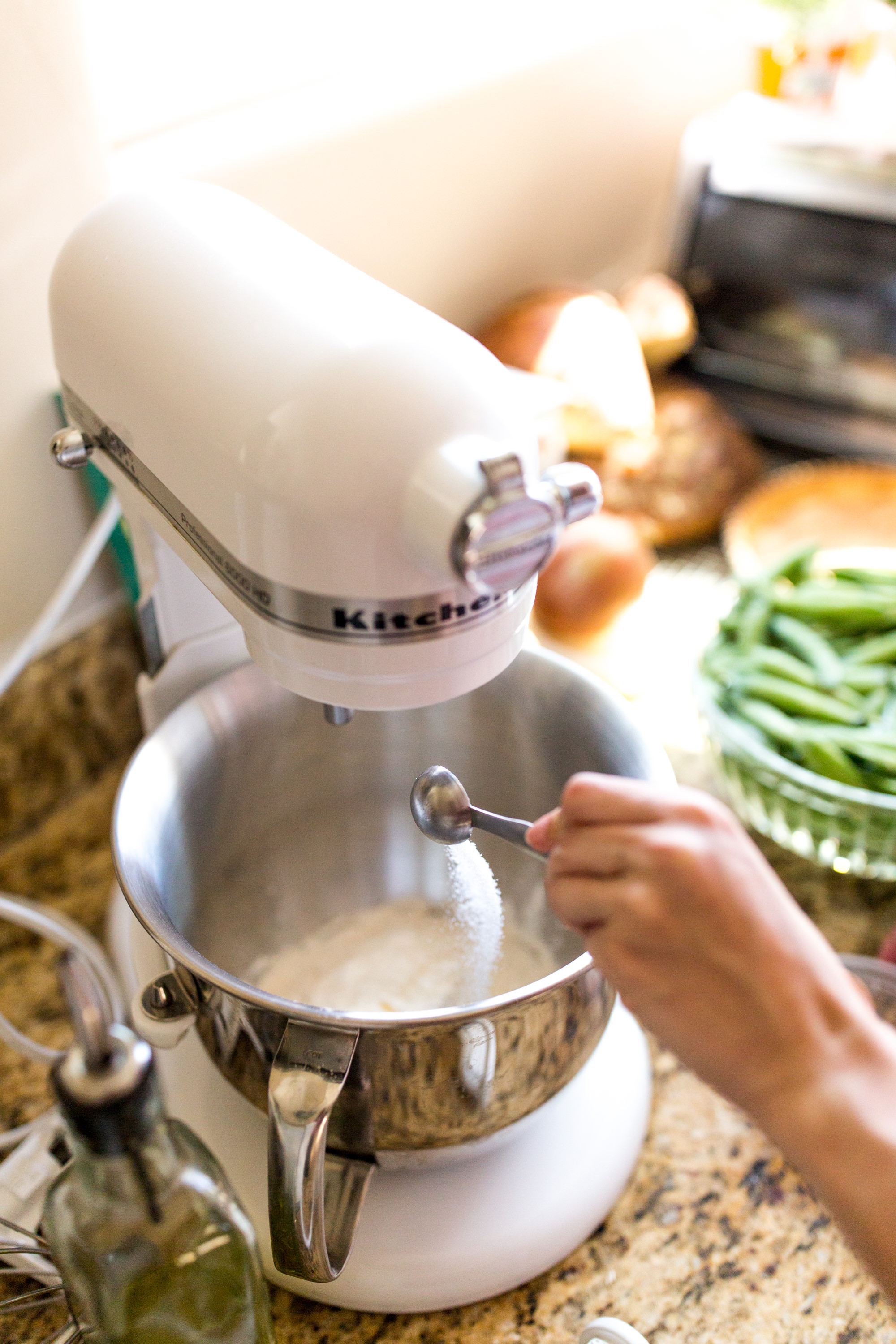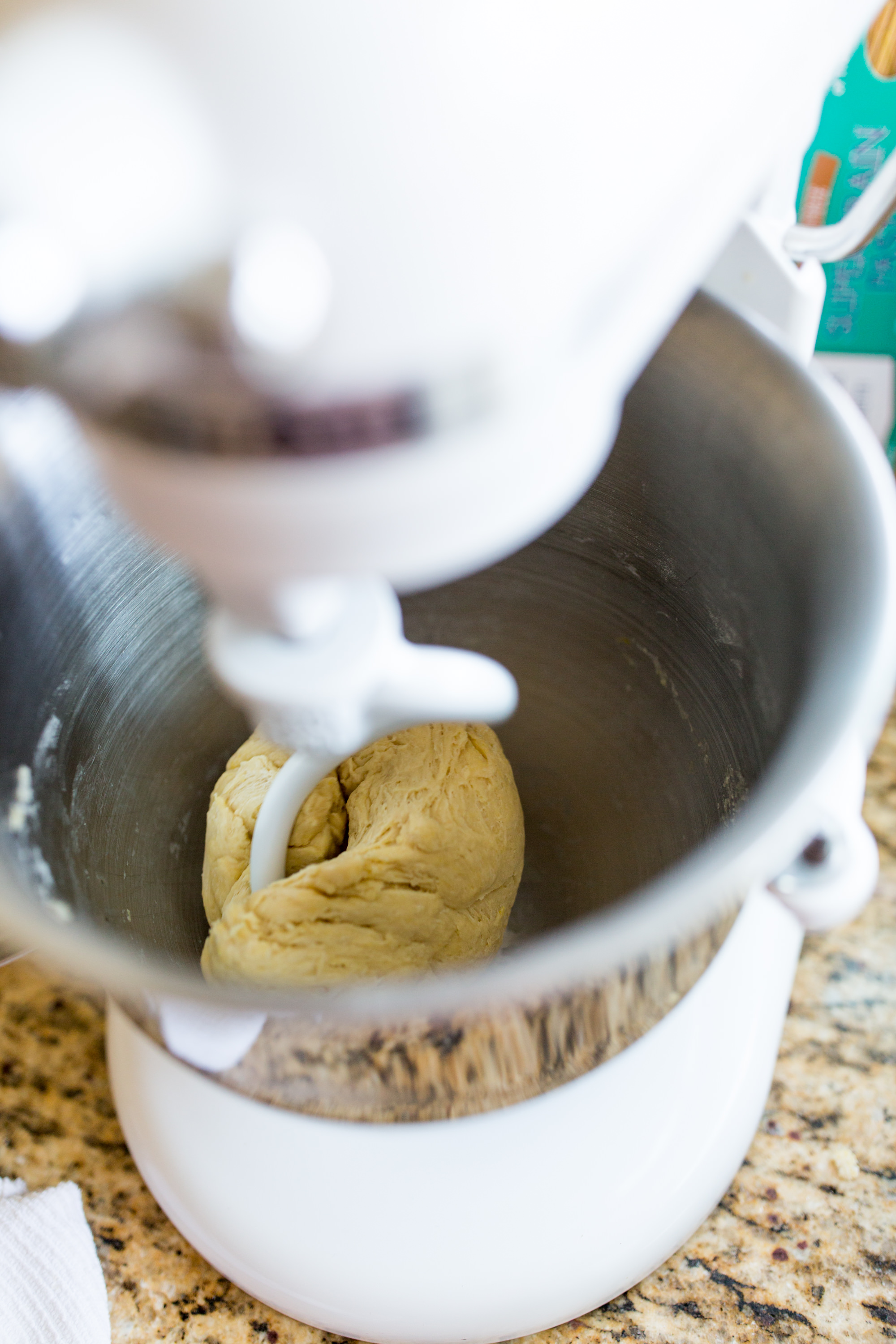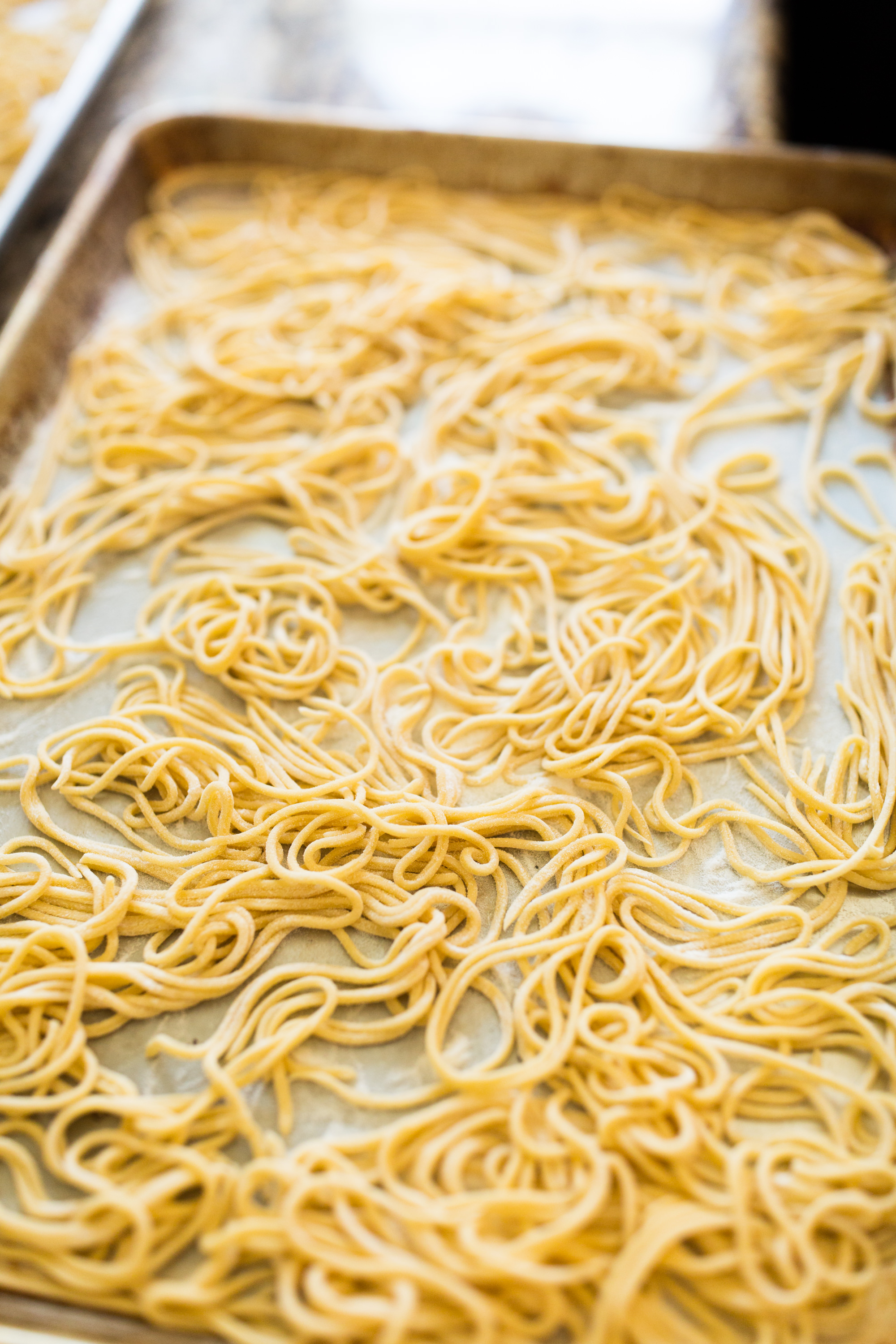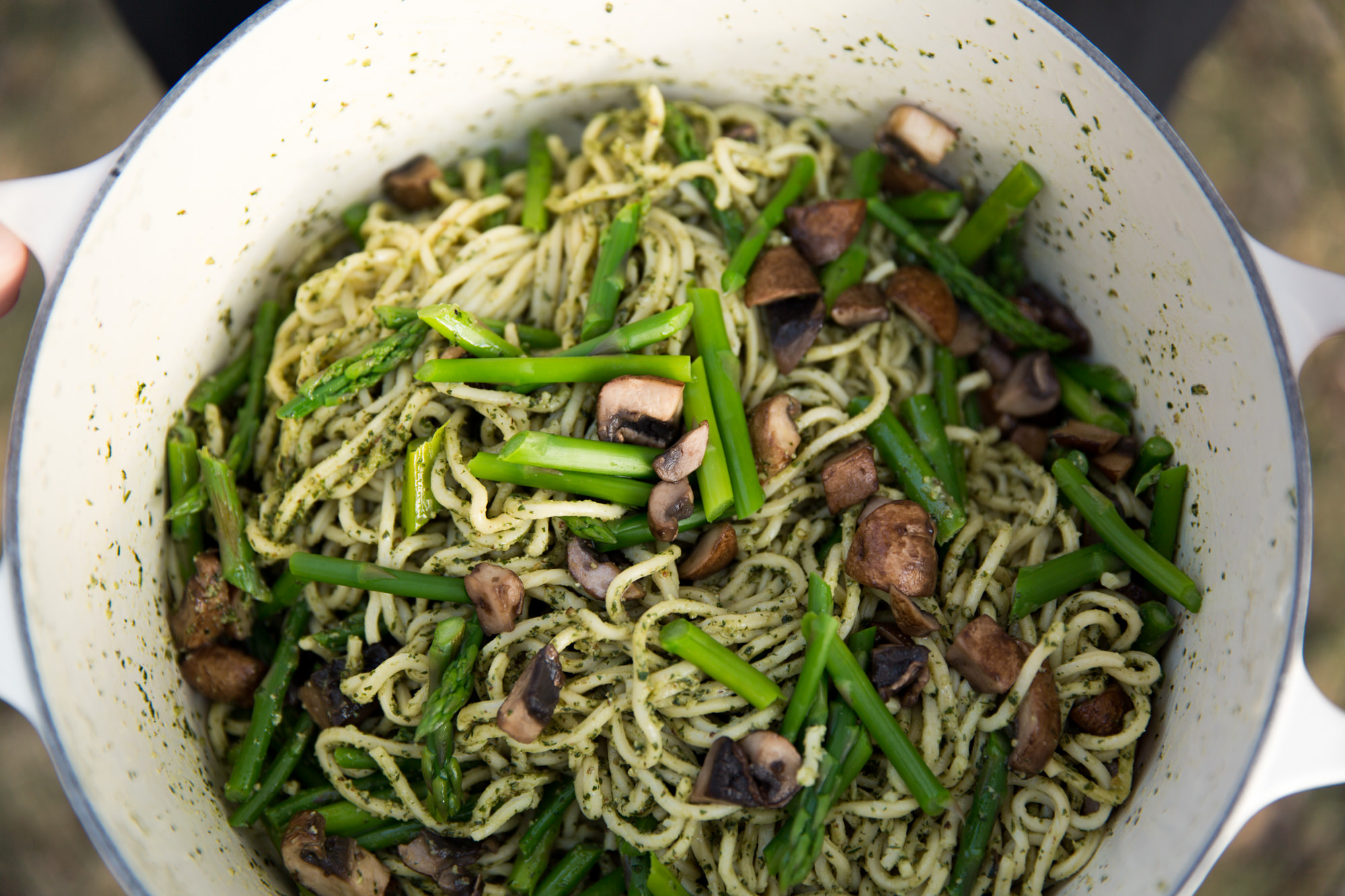For my collaboration with South on Broadway, we made some delicious homemade pasta. I've had my pasta maker for quite a while now, and every method for fresh pasta I've tried has been more trial and error than tried and true. Most modern recipes call for mixing in a kitchen aid with a dough hook, and calls for a set amount of flour and eggs.
The problem is a dough hook is not the best for initial mixing and not all eggs have the same amount of liquid. The result is either dough that is too wet, or too dry, having to guess how much water or flour to add to get the right consistency. While this takes some of the guess work out, there's no getting around the fact that making fresh pasta does take a bit of practice, and patience. You really do have to look and feel the dough to know when its ready.
For more tips on pasta making check out this post from Rosemary & Rye.
Fool Proof Homemade Pasta
While this recipe doesn't require the use of a Kitchen Aid, it sure does make life easier. The Secret trick is using rice flour to keep your dough from sticking together before and after being cut.
Ingredients & Tools
Kitchen Aid Mixer with Paddle & Dough Hook
Pasta Maker (hand crank or Kitchen Aid Attachment)
Flour
4 eggs
1 1/4t olive oil
1/2t salt
Rice Flour
Dough Method
- Equip your mixer with the paddle attachment and mix up the eggs olive oil and salt.
- Add about 2/3c of flour and mix on low. Continue adding flour until a thick batter forms. When it becomes a little difficult for the paddle to keep working, switch over to your dough hook.
- Continue to add in flour a little bit at a time until the dough can't absorb any more flour. Let it mix a few minutes in between additions. You know the dough had absorbed enough flour when it isn't totally stuck to the dough hook and it has forms a smooth surface. Be patient - sometimes it takes a few minutes for the dough to absorb after a new addition. If you have found you've added too much flour (the dough won't stay together in one cohesive mass), wet your hands, and with the mixer running, flick water into the dough. This ensures you're adding just a bit at a time so you don't make your dough too wet.
- Once the dough has the right amount of flour, let the mixer run for a few minutes to really get that gluten to form.
- Remove dough, wrap in plastic wrap and chill for 45min - 1hour in the fridge.
Pasta Making Method
- Remove dough from fridge and cut into 4 equal pieces. Megan Lloyd shared a great tip of pinching one end of the dough together to make it easier to feed into your past roller.
- Put your roller on the widest setting and run the dough through 4-5 times, folding it in half between runs until the dough is smooth. If the dough is too sticky, lightly dust with rice flour before going through the roller.
- Using the settings on your pasta maker, work the dough down to your desired thinness, putting the dough through one time for each level.
- To keep the pasta from sticking, dust your work surface heavily with rice flour before laying down your sheets. If you have to stack them, flour up parchment paper or cellophane between layers.
- Make sure your dough is lightly dusted with rice flour before putting it through the cutter. If your dough ended up being a bit wet, this is a game changer; your pasta will properly separate instead of clumping together.
- Coat cut pasta very generously with rice flour. This helps it from sticking together and the dough won't immediately absorb it like it would regular flour, not to mention any extra flour doesn't clump up.
- When you're ready, bring a pot of water to a boil and cook for about 8 minutes. I usually start testing for doneness at 6 minutes.














